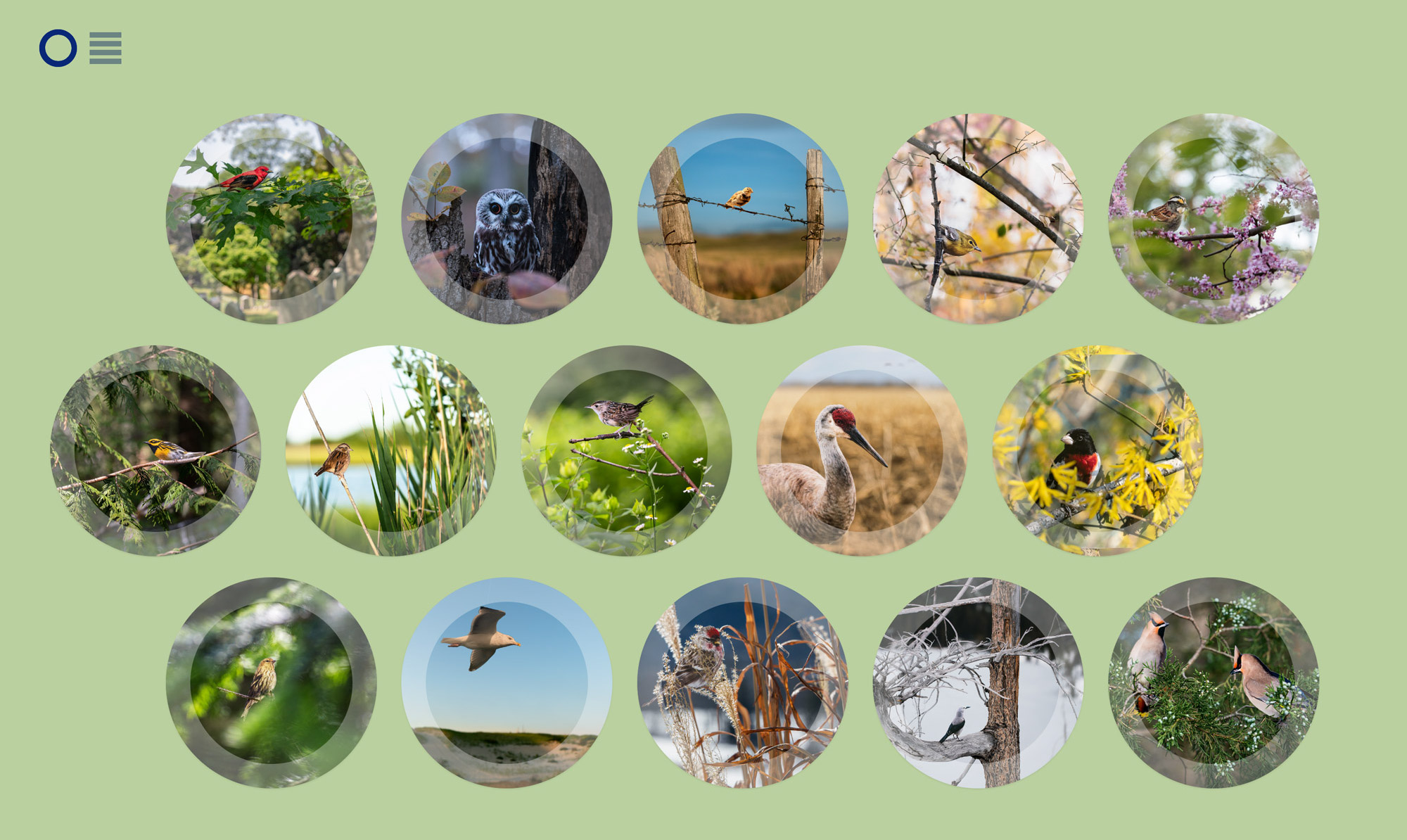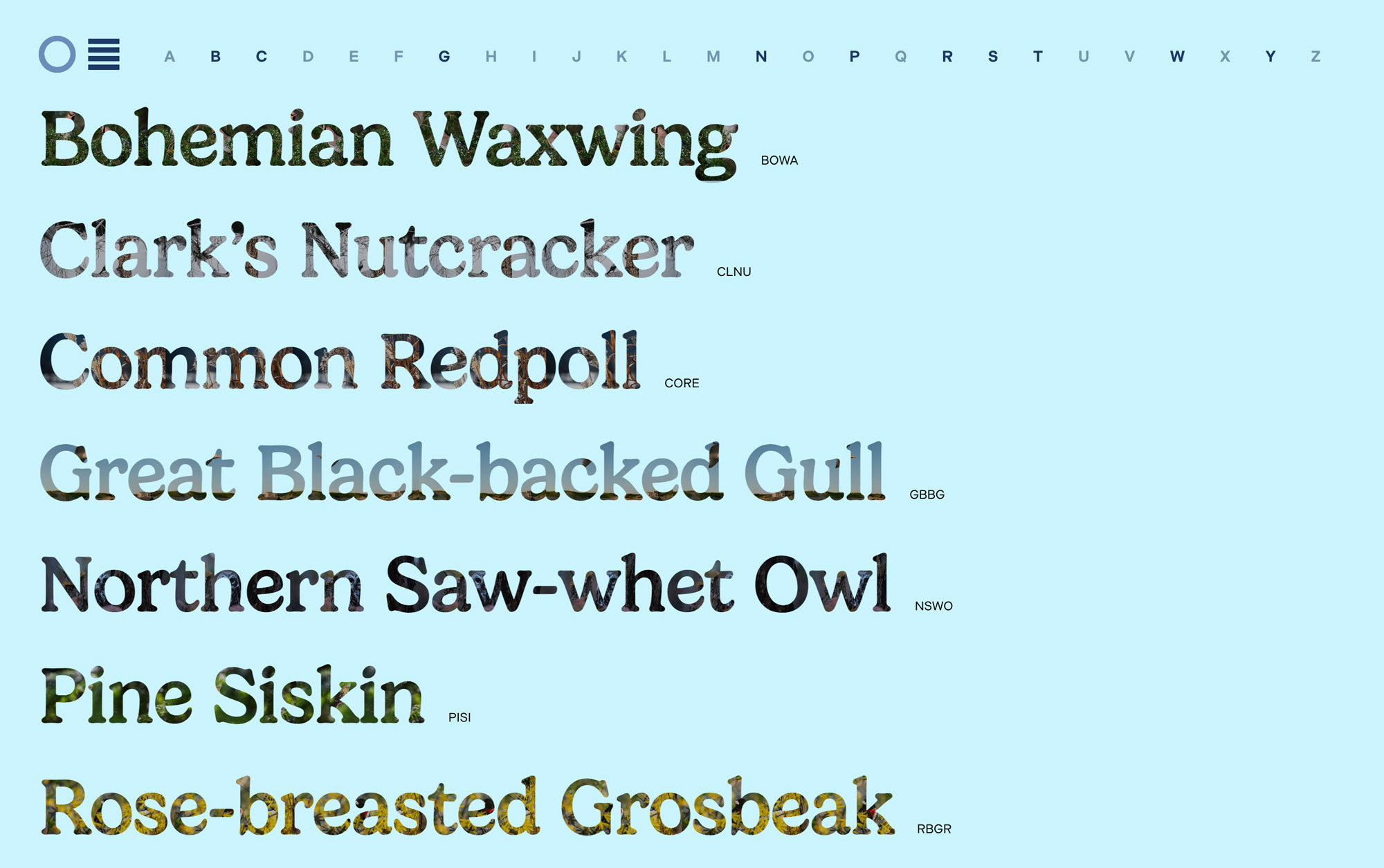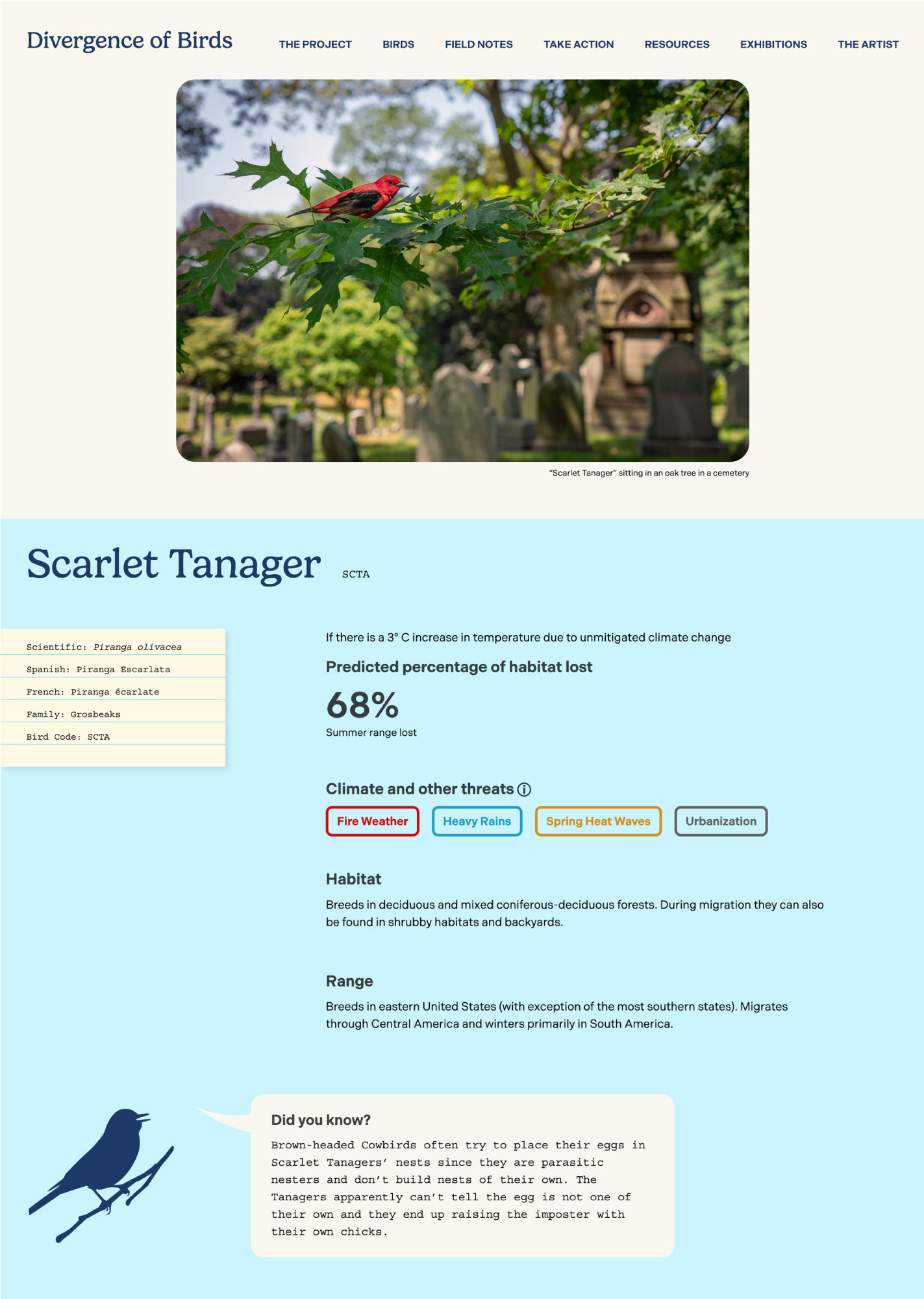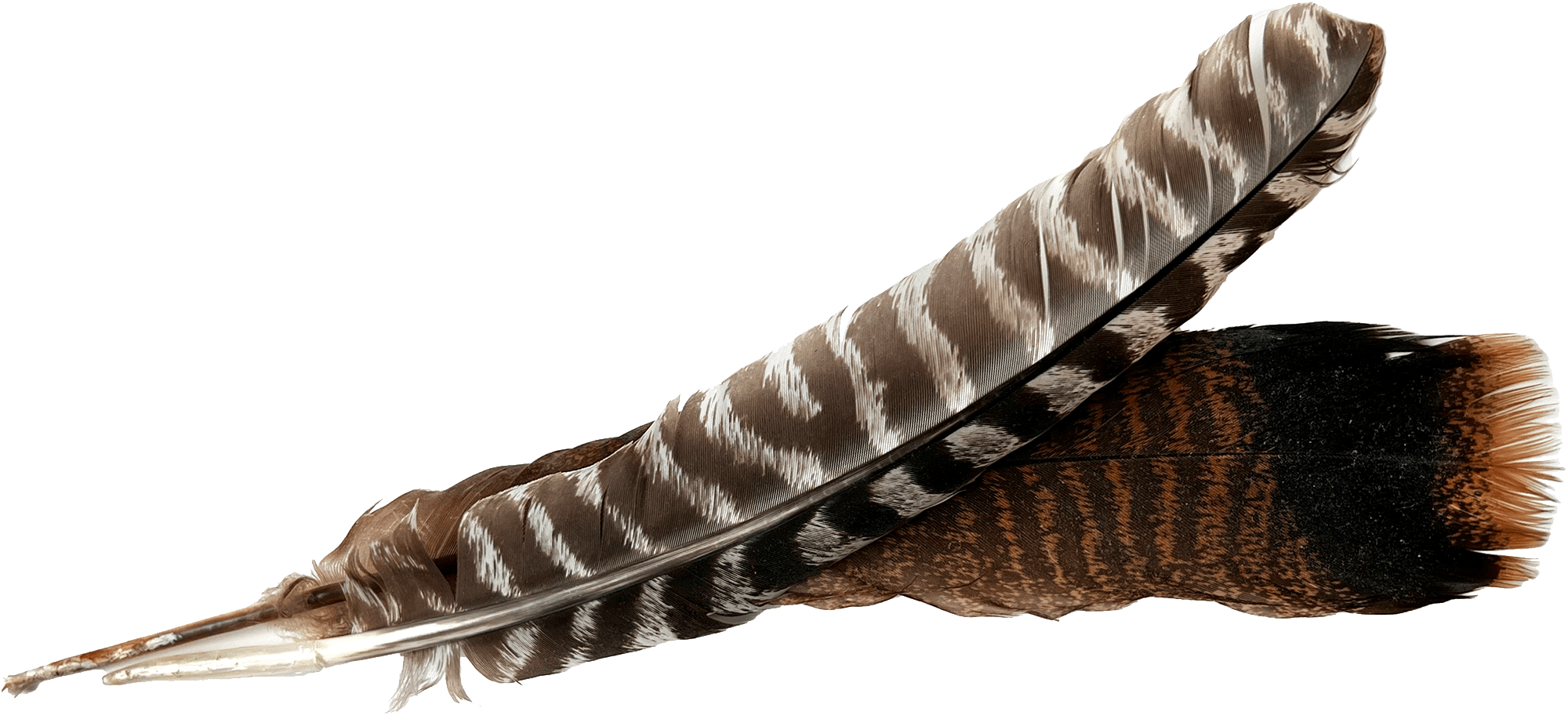The Project
A conceptual art project that focuses on the looming threat of species extinction due to climate change
The Project
Divergence of Birds, takes inspiration from two texts: The Audubon Society’s “Birds and Climate Change Report” which projects that, by 2080, climate change will affect the range of habitat of over half of North American birds; and Phillip K. Dick’s 1968 dystopian novel, “Do Androids Dream of Electric Sheep?” where electric versions of once-commonplace animals are so realistic that they fool even veterinarians. Divergence of Birds addresses the prospect that, one day, only facsimiles of climate-impacted animals will be left.
Combining the documentary style of her previous climate project, The Witness Tree, with her earlier narrative fictional approach, Carolyn Monastra photographs paper cutouts (from appropriated online photos) of the nearly 400 climate-threatened birds. She places the cutouts within the birds’ current habitats so that they look real, but upon inspection, reveal themselves to be photos within photos—the gaze within the gaze upon nature—as actual birds recede into marginal zones of survival.
The images disrupt the casual gaze, disarming expectations of nature photography leaving viewers disturbed and questioning: What would our world be like without the presence and sound of birds? What can we do to protect them? Audiences are invited, through discussions and interactive workshops to participate in climate activism.
This project website is designed to enlighten and inspire individuals of all ages about the profound impacts of climate change on the bird species of North America.
How to use this site
Our aim is to foster a deeper connection to these avian wonders and encourage active participation in safeguarding their habitats and our environment.
Bird Portfolio
Visitors have two engaging ways to explore the portfolio of images. In “Circles” view, you can browse through the birds, allowing you to identify the ones that capture your attention. Alternatively, you can utilize the alphabetical list to search for birds by name. In either mode – clicking on the bird’s image or name will take you to a dedicated bird page.



Birds
Each page presents Carolyn Monastra’s photograph of the bird cutout in its natural habitat, with the image’s title underneath it. Since the environments in which she photographs are also being impacted by climate change, the landscapes, plants, and trees in the scenes are also noted in the titles. Only the birds’ names are in quotation marks, alluding to the fact that the cutouts are facsimiles, not the real birds.
Listed on a note card under the photograph, is the bird’s scientific (Latin) name, as well as the Spanish and French translations, and the 4 letter bird code. We also give valuable insights into the percentage and nature of climate-related threats faced by each bird. By clicking on the informative imore info icon next to the threats, you can access detailed explanations.
Don’t miss the “Did you know?” section at the bottom of each bird page, offering intriguing tidbits about each bird, sparking curiosity and inviting you to delve deeper into the world of birding.
Other Pages
Our Take Action and Resources pages are rich sources of information, offering guidance on bird protection and numerous resources to expand your knowledge of birds and engage in birding activities.
In our Field Notes section, we offer exclusive glimpses behind the scenes, providing you with a unique perspective on the making of this project. Our website will continue to evolve as the project unfolds.
Timeline
We are excited to announce that the project will gradually unveil its content over the coming months. Some content uploads will focus on specific types of birds, such as shorebirds or warblers, or birds from particular regions.
We also plan to create and add downloadable educational materials to be available for teachers to use in the classroom. We invite you to join us on this captivating journey of discovery and conservation. Please join the mailing list to be kept informed about Divergence of Birds updates and events.
Please get in touch via the Artist page if you would like to book exhibitions, presentations, or workshops or have a great resource to add to the site.
